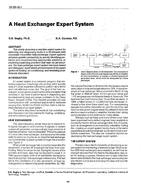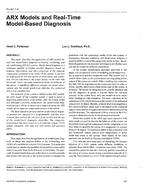The ASHRAE (2003) Handbook includes relationships and/or data tables that quantify the effects of individual components such as lined and unlined plenums and duct elbows. Most of these guidelines have been developed through application experience and are semi-empirical in nature. In some cases, the accuracy of these guidelines is not clear. With the increasing maturity of computational tools, it is now practical to create numerical models of some of the key dynamic characteristics of specific HVAC systems. This paper demonstrates that numerical modeling of the acoustical characteristics of HVAC plenums is practical. The very reasonable agreement found between modeled and ASHRAE-tested plenums confirms that numerical methods can be used to determine the transmission loss. Overall, the numerical models showed better agreement with the experimental results than the empirical formula developed in ASHRAE Research Project 1026 (Mouratidis and Becker 2003). The numerical procedure used was the boundary element method.
Units: Dual
Citation: ASHRAE Transactions, Vol. 113, pt 1, Dallas 2007
Product Details
- Published:
- 2007
- Number of Pages:
- 9
- File Size:
- 1 file , 2 MB
- Product Code(s):
- D-DA-07-002


